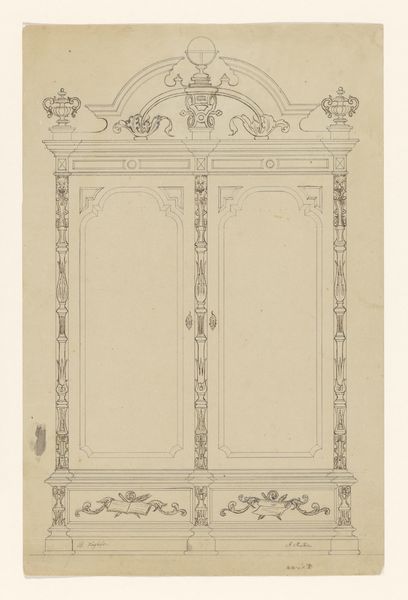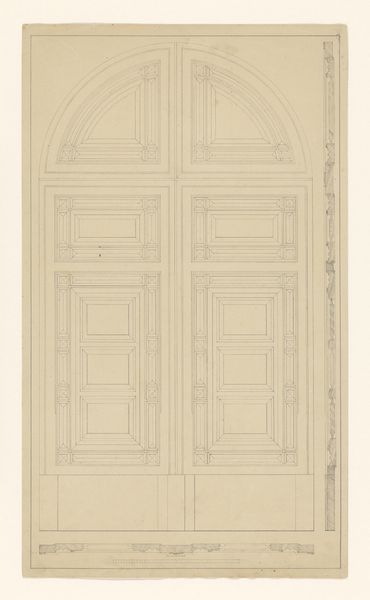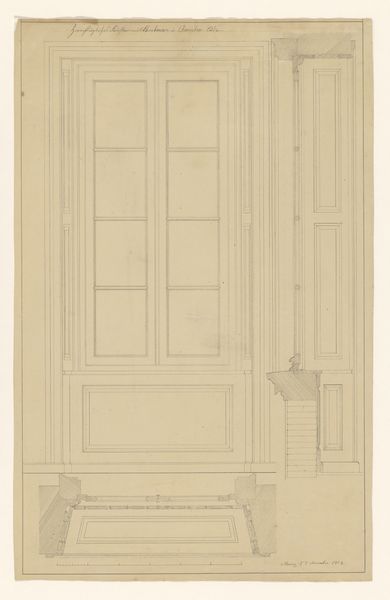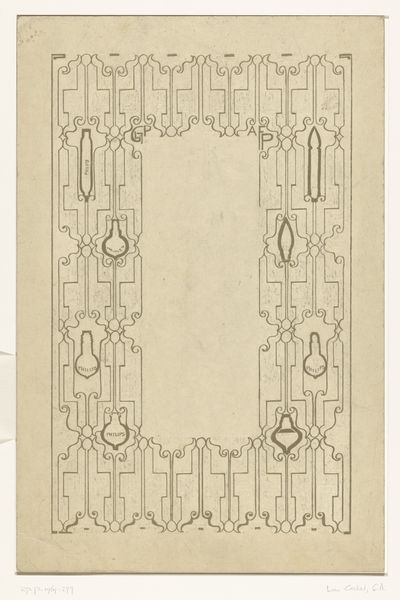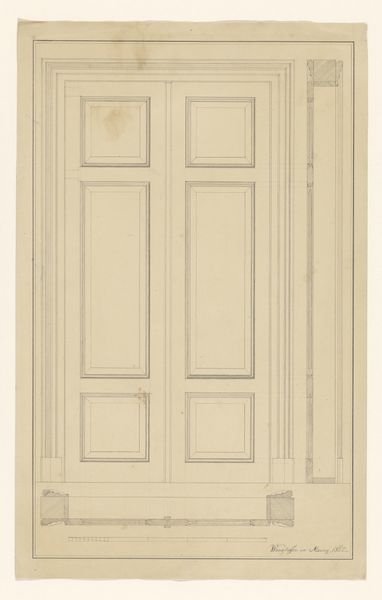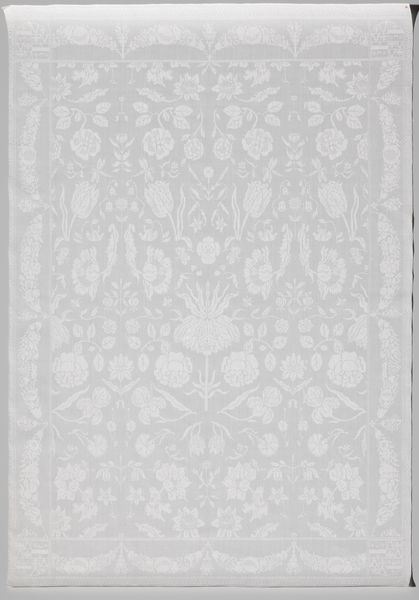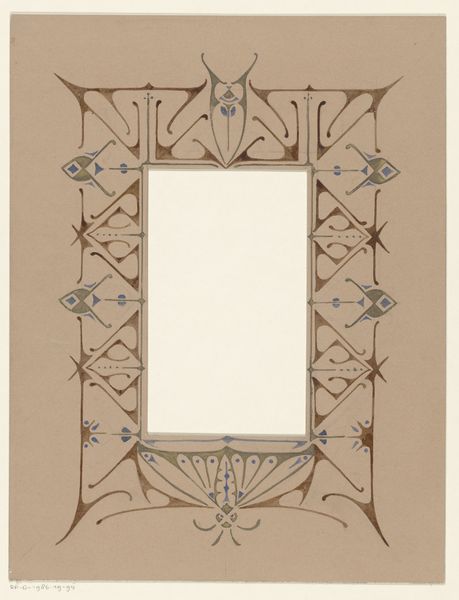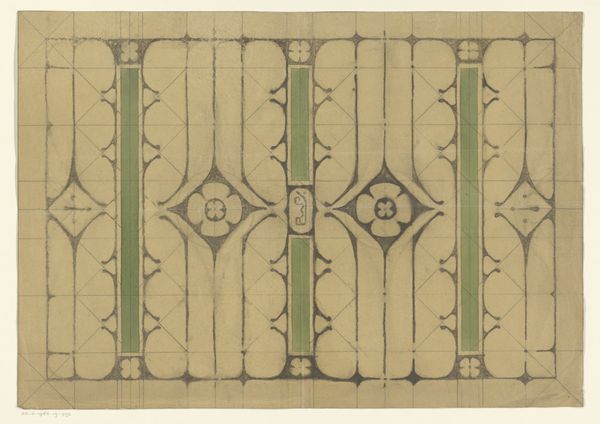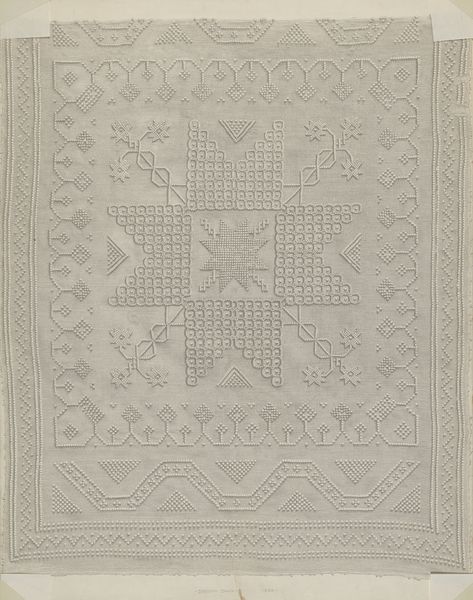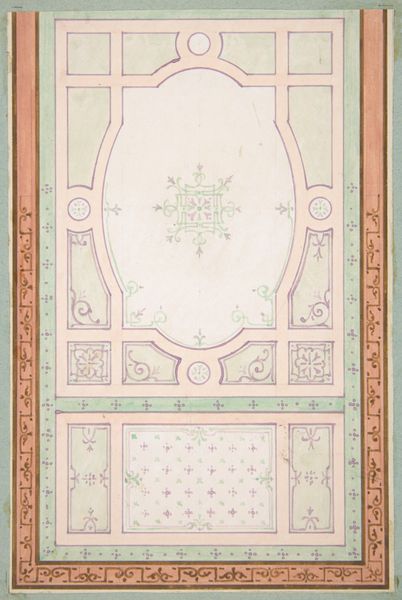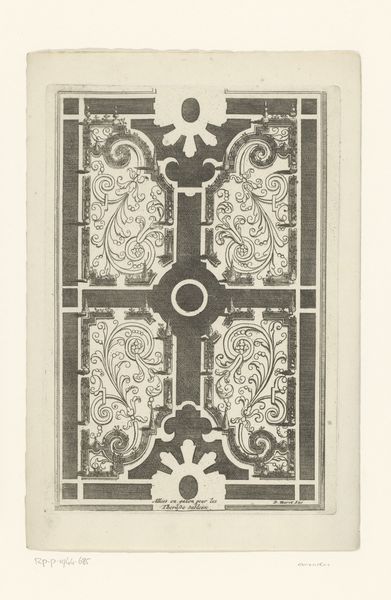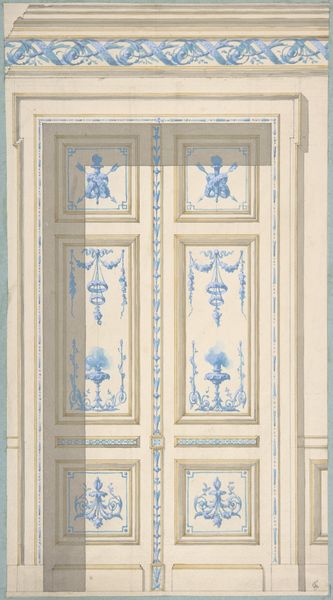
drawing, paper, pencil, architecture
#
drawing
#
neoclacissism
#
paper
#
form
#
geometric
#
pencil
#
architectural drawing
#
line
#
architecture
Dimensions: height 453 mm, width 273 mm
Copyright: Rijks Museum: Open Domain
B. Winghofer designed this double door with a side view and floor plan, rendered in delicate lines on paper. Dominating the door are stylized rosettes, each a symmetrical flower-like pattern enclosed in a circle, repeated in a grid across both leaves. The rosette has ancient roots, found in the art of Mesopotamia, Egypt, and Greece. Often associated with deities and royalty, it symbolizes renewal and cyclical existence. The motif appears in many guises throughout history, on Roman sarcophagi, Gothic cathedrals, and Renaissance textiles. Each culture infused the symbol with its own ethos. In Christianity, it is reinterpreted as a symbol of the Virgin Mary. Like the ouroboros, it reminds us of life's eternal rhythms, death and rebirth. The emotional resonance lies in its promise of hope and continuity. The recurring use of the rosette demonstrates our deep, subconscious yearning for order, beauty, and the eternal. And the enduring, non-linear progression of symbols echoes our collective memories.
Comments
No comments
Be the first to comment and join the conversation on the ultimate creative platform.
